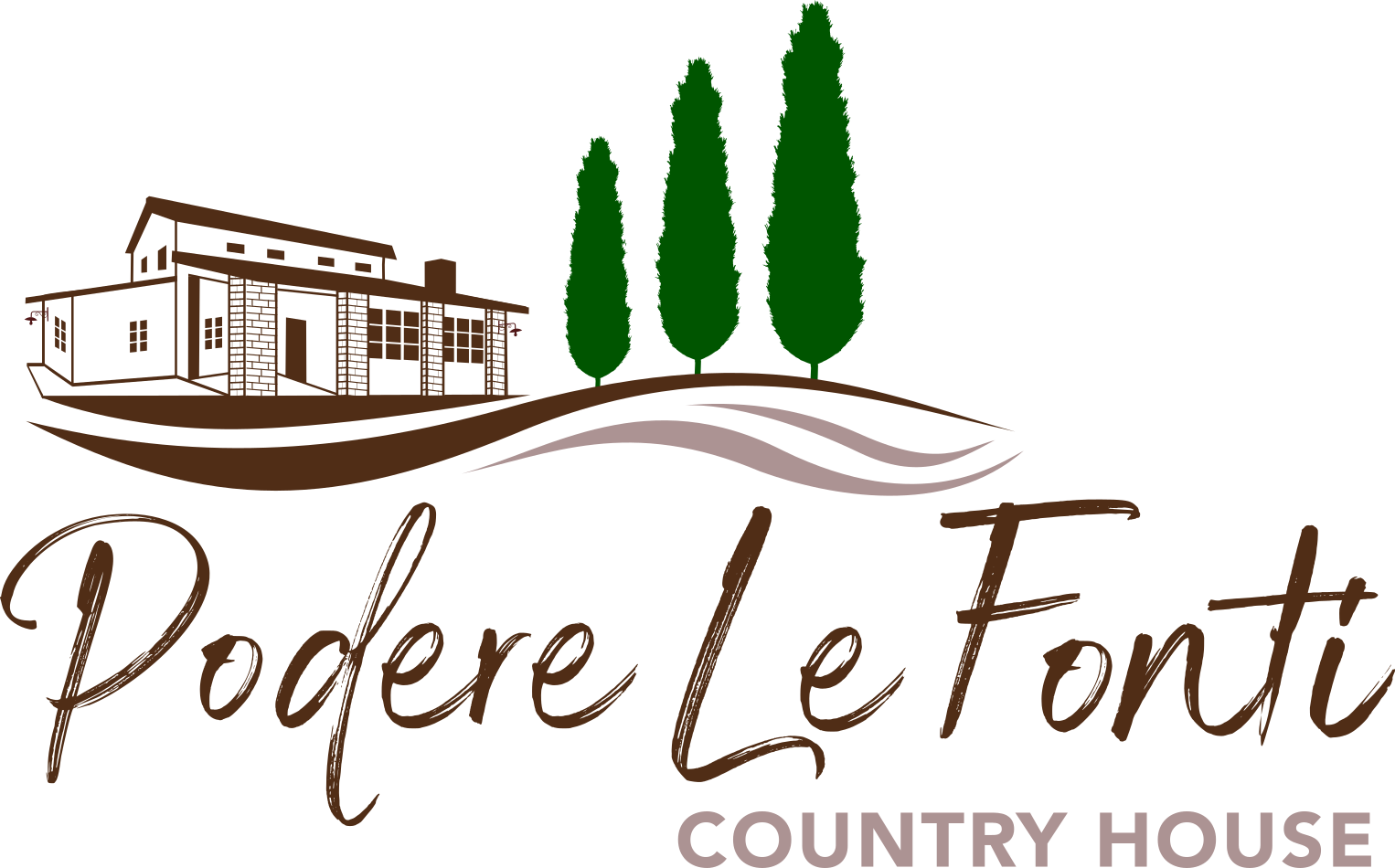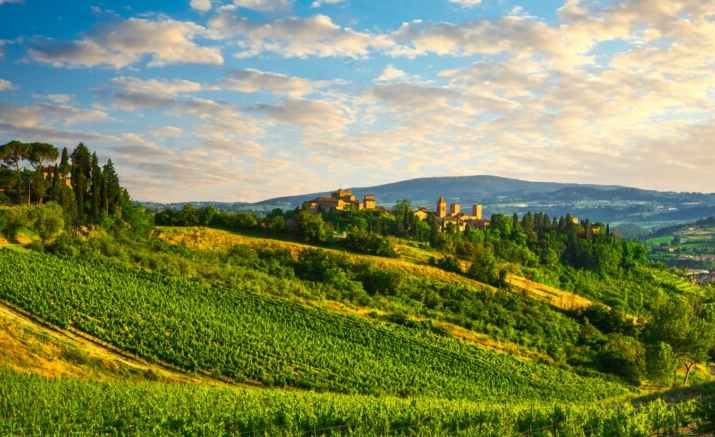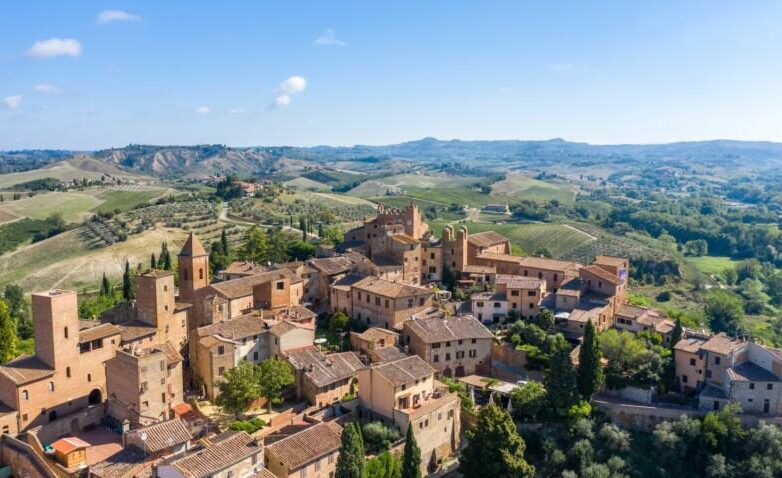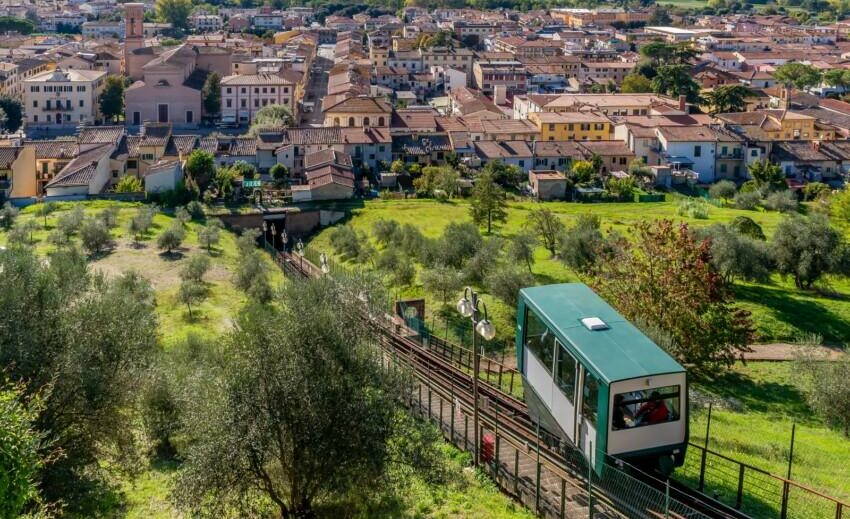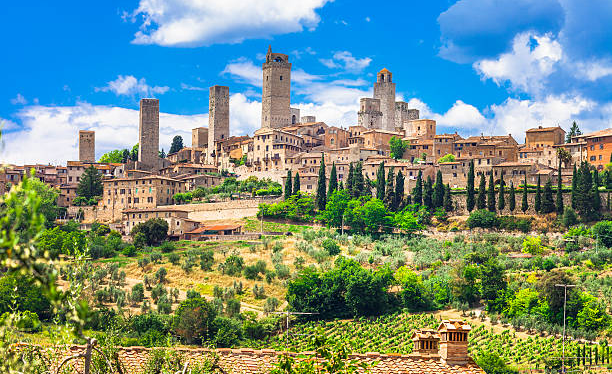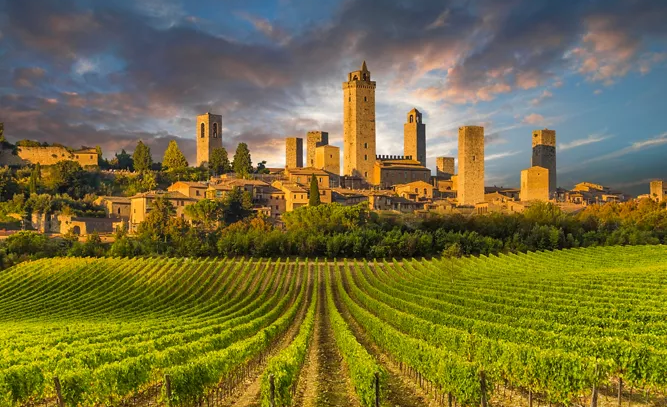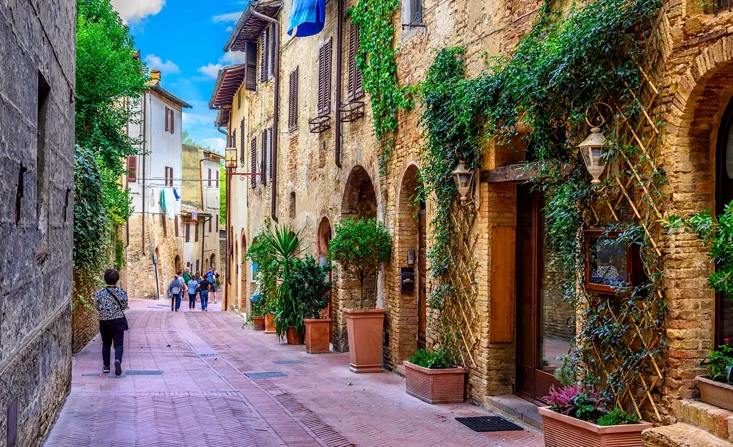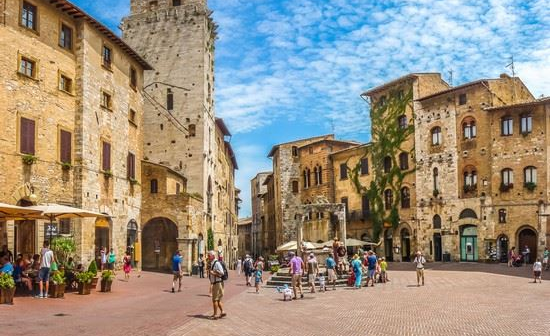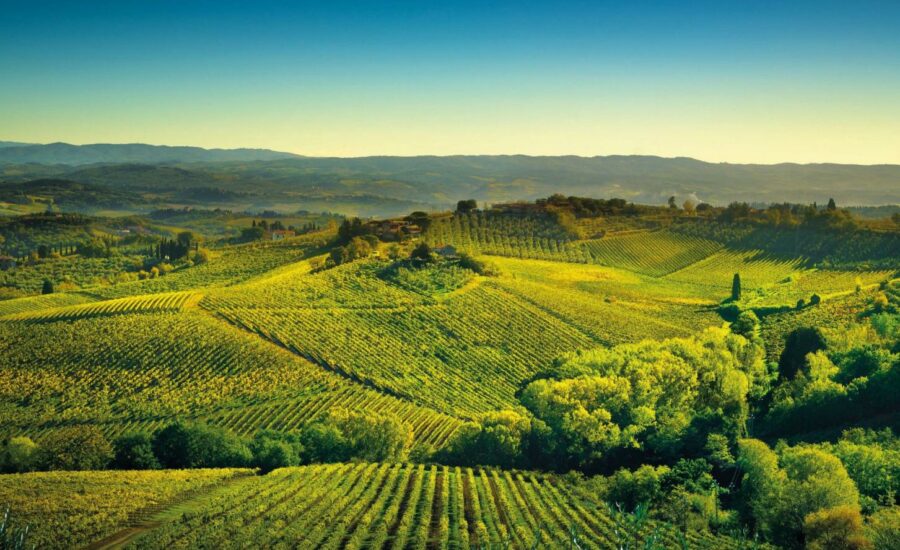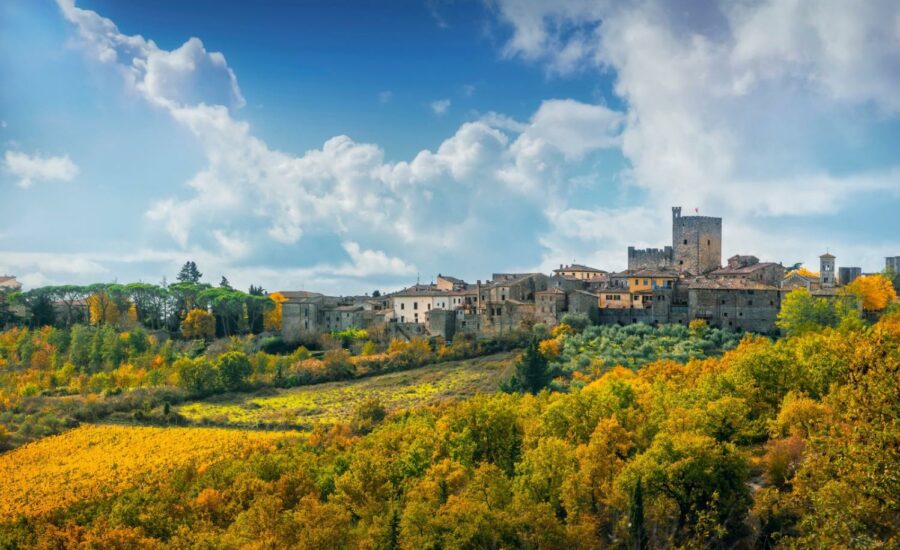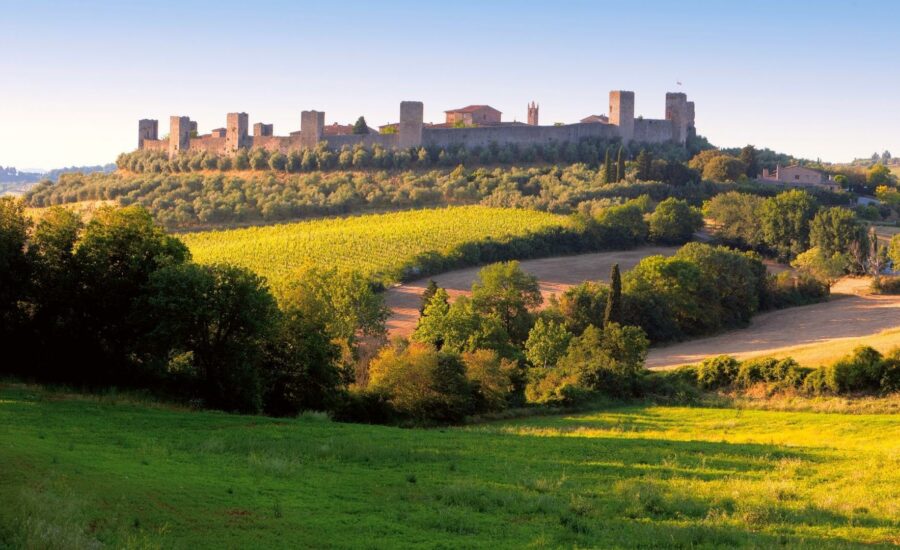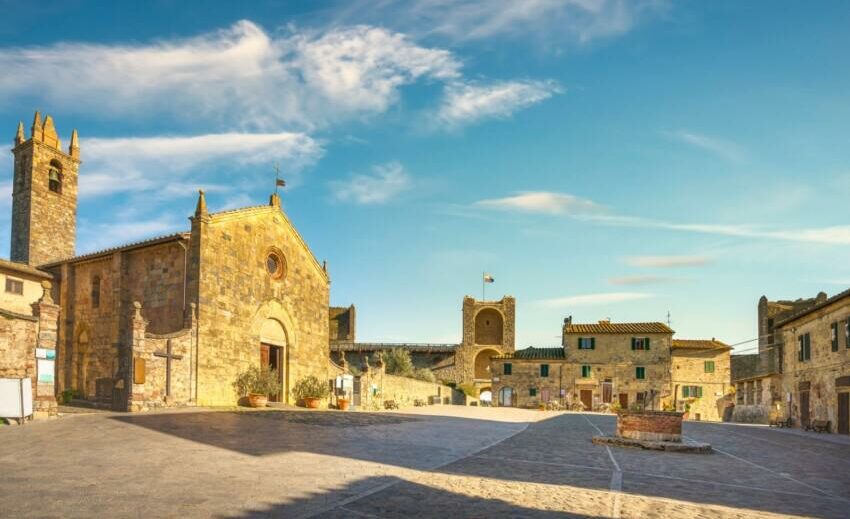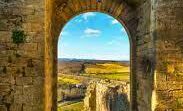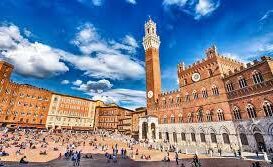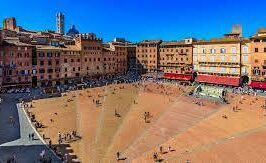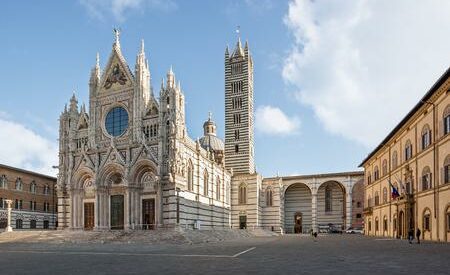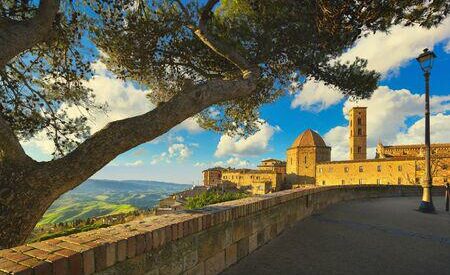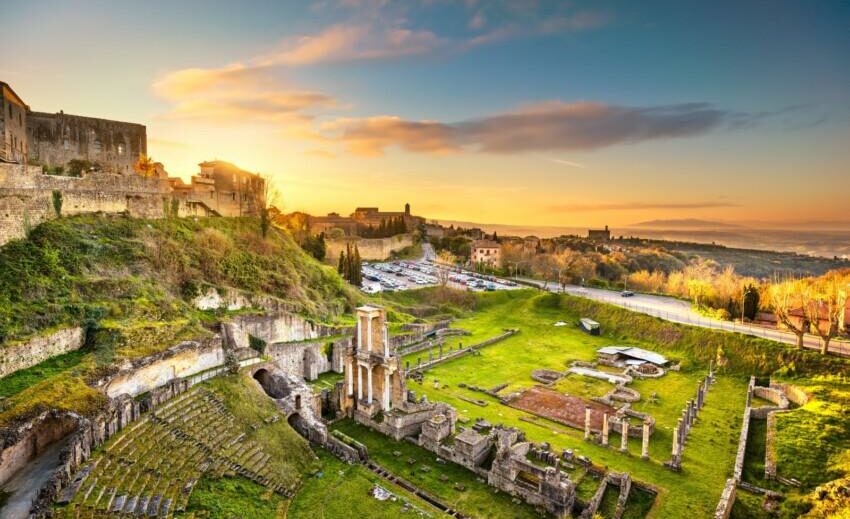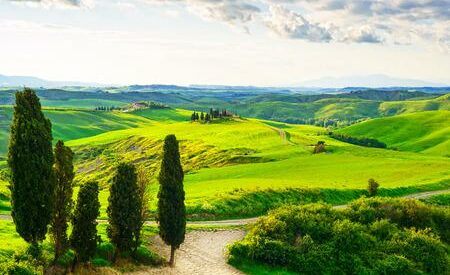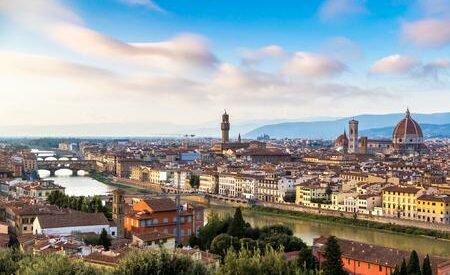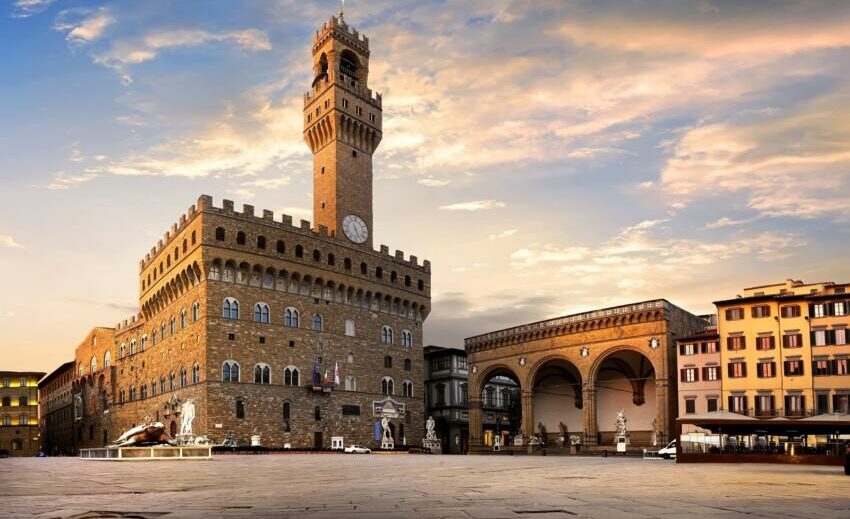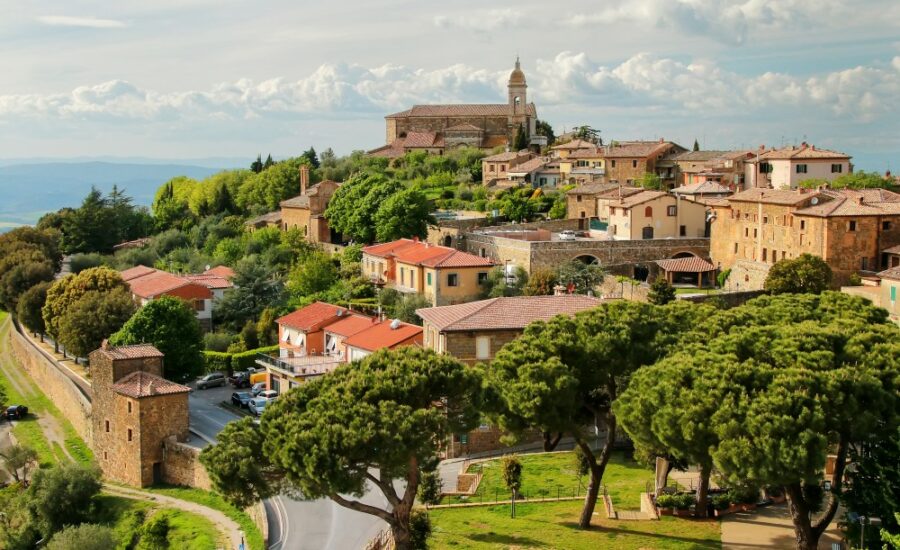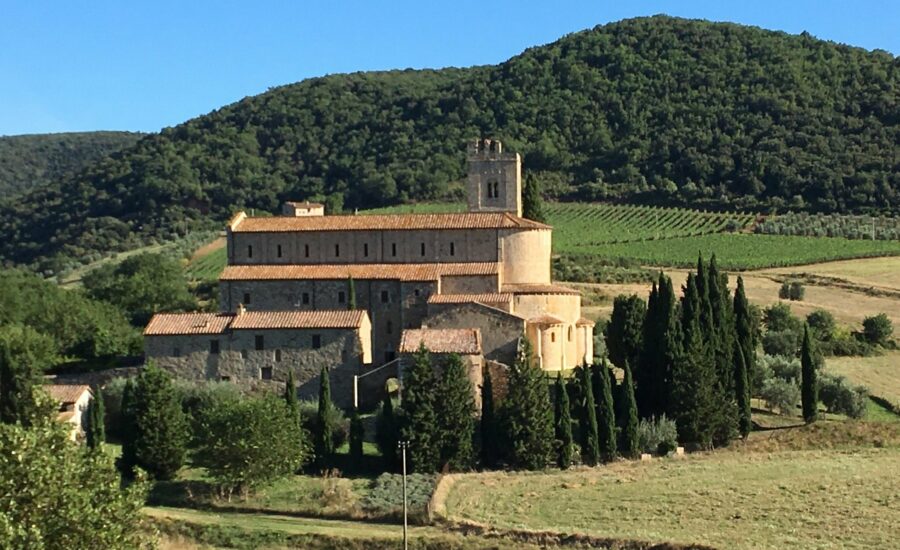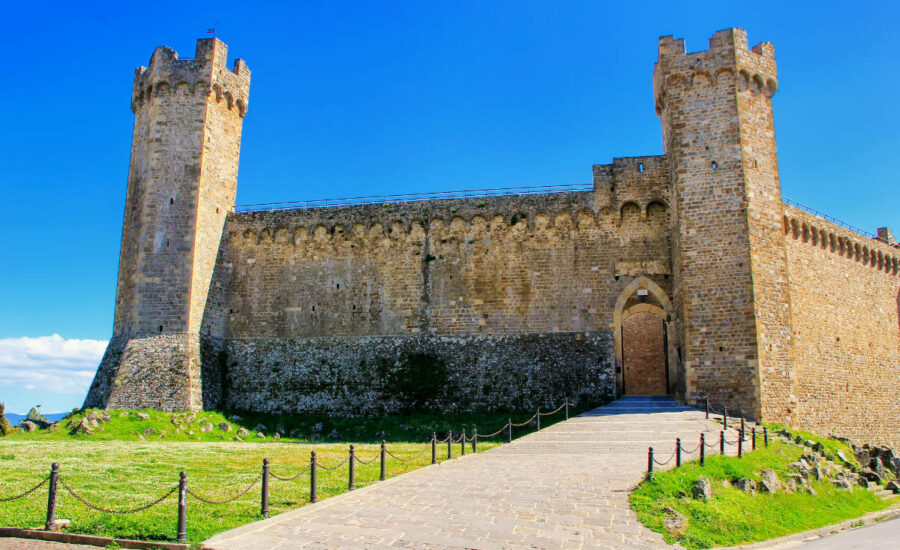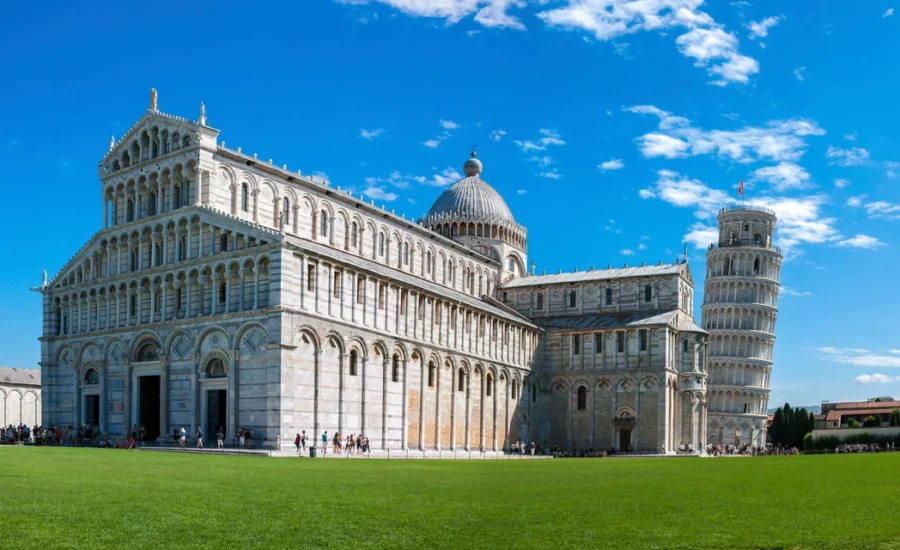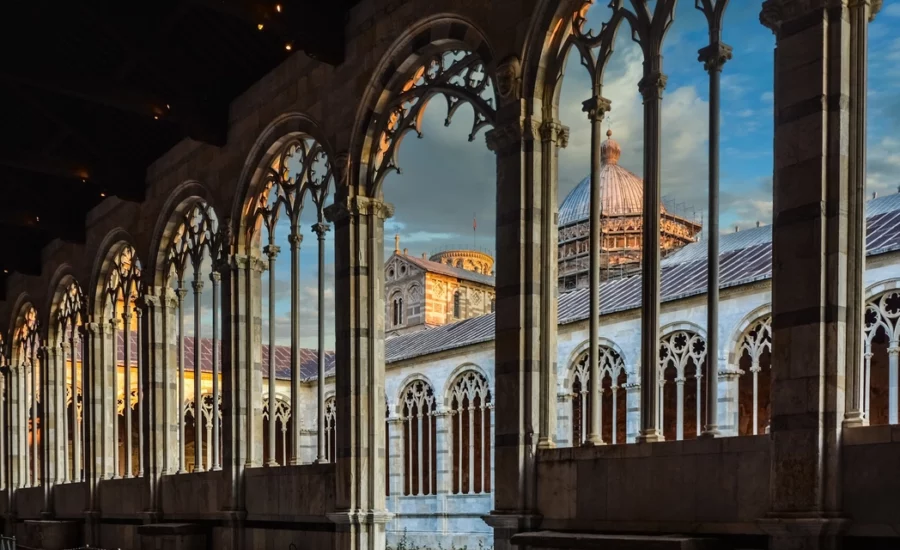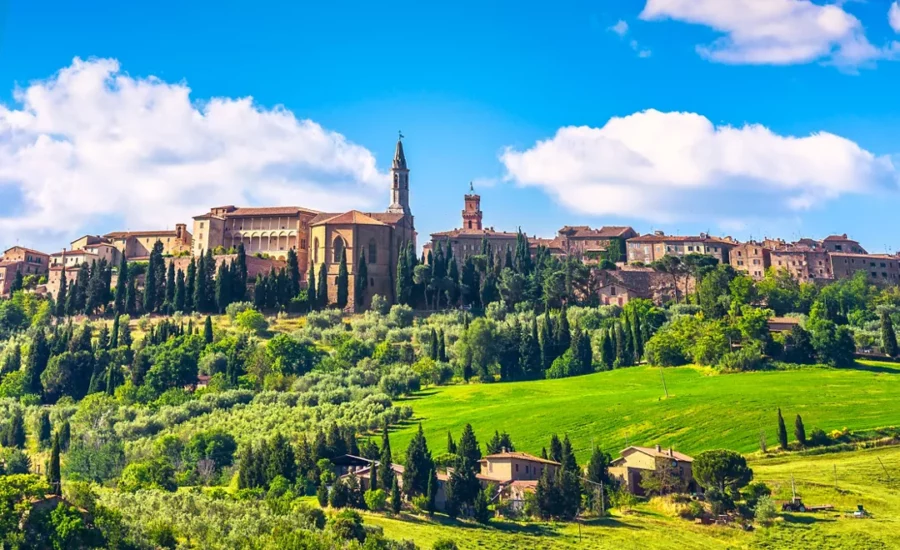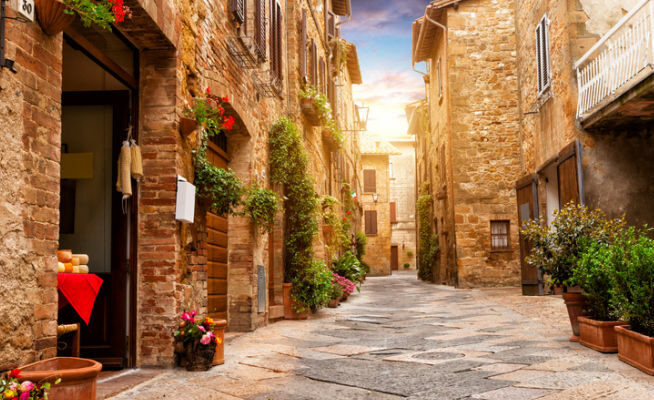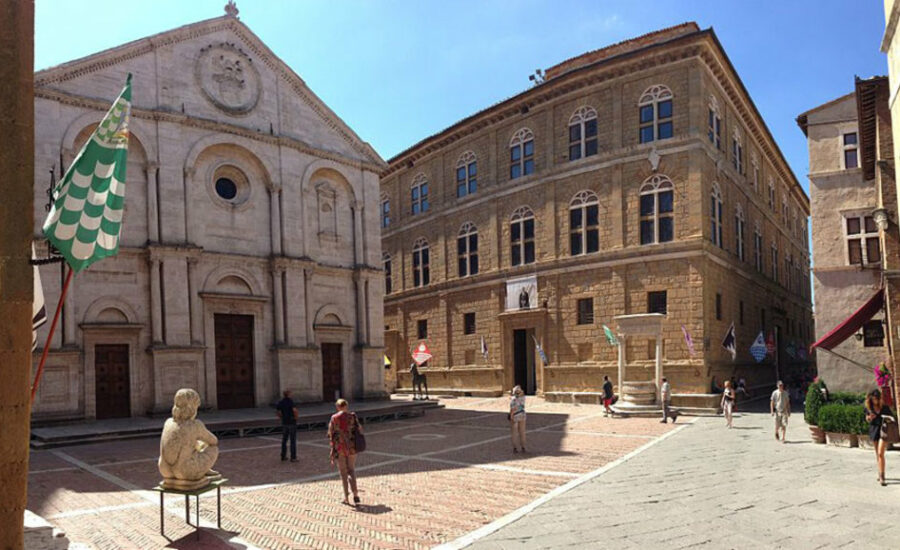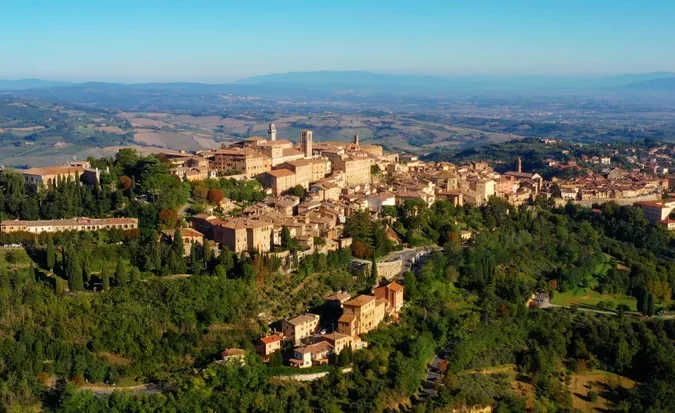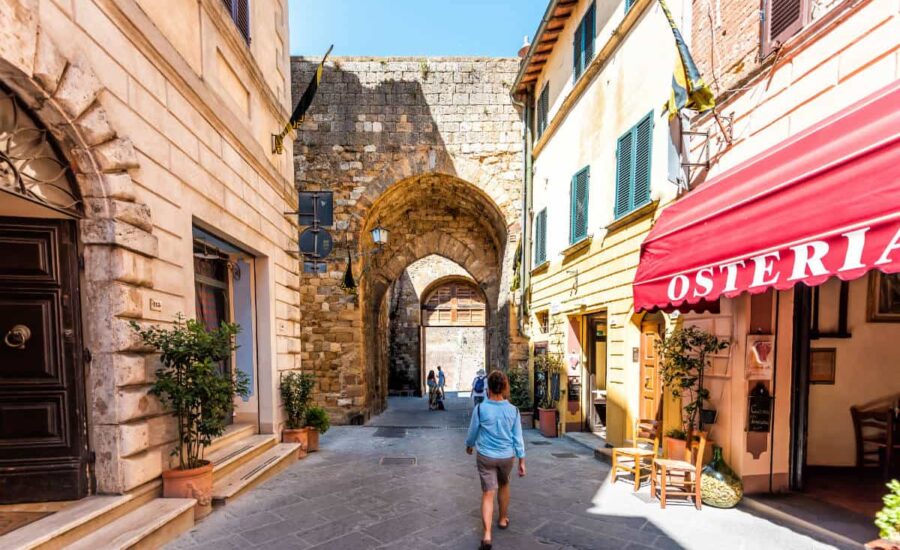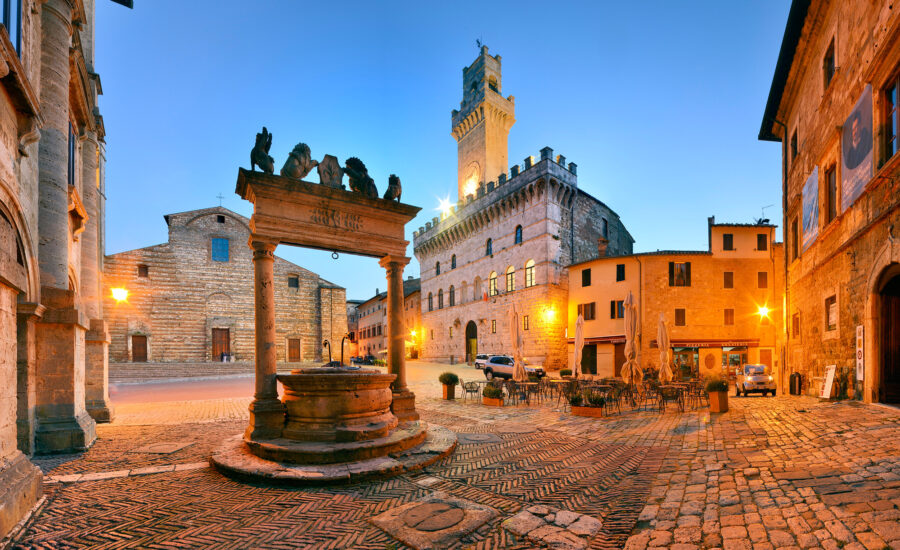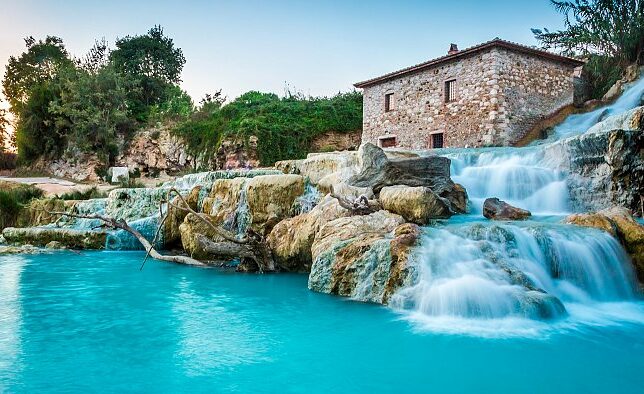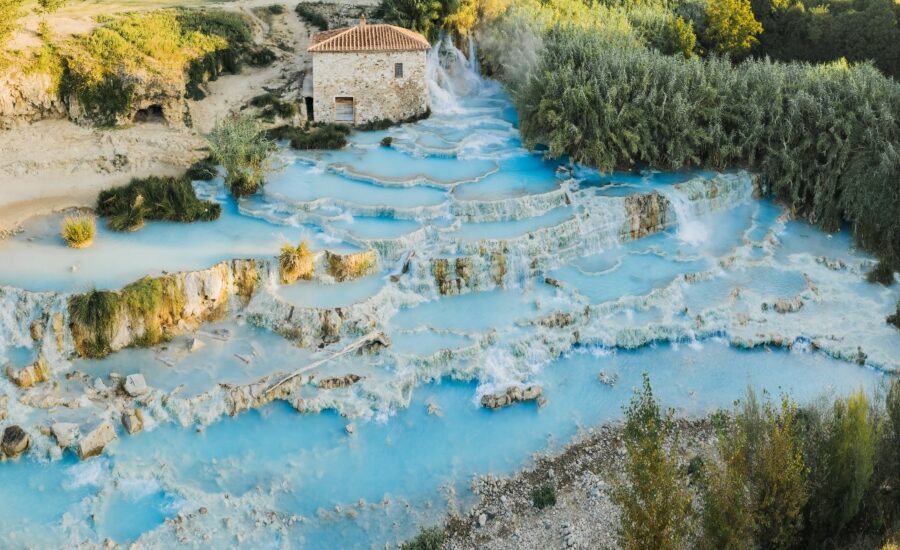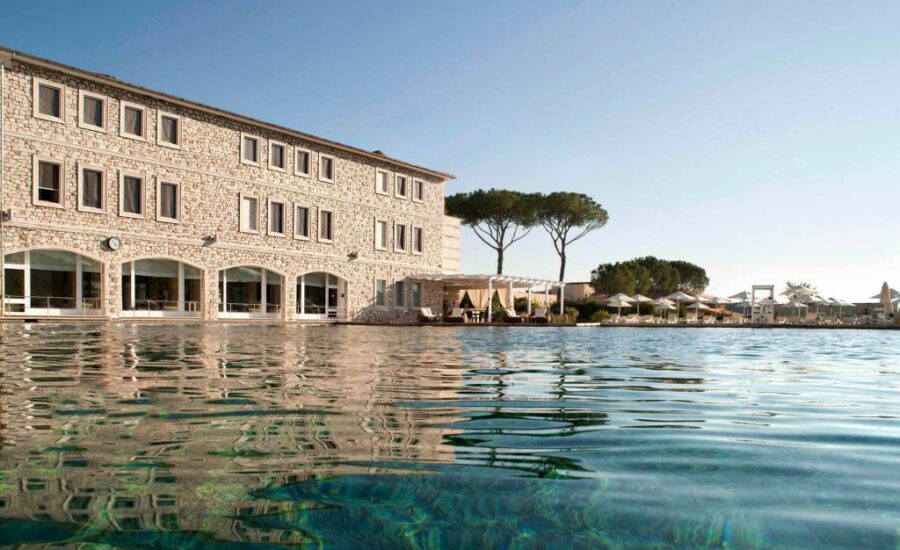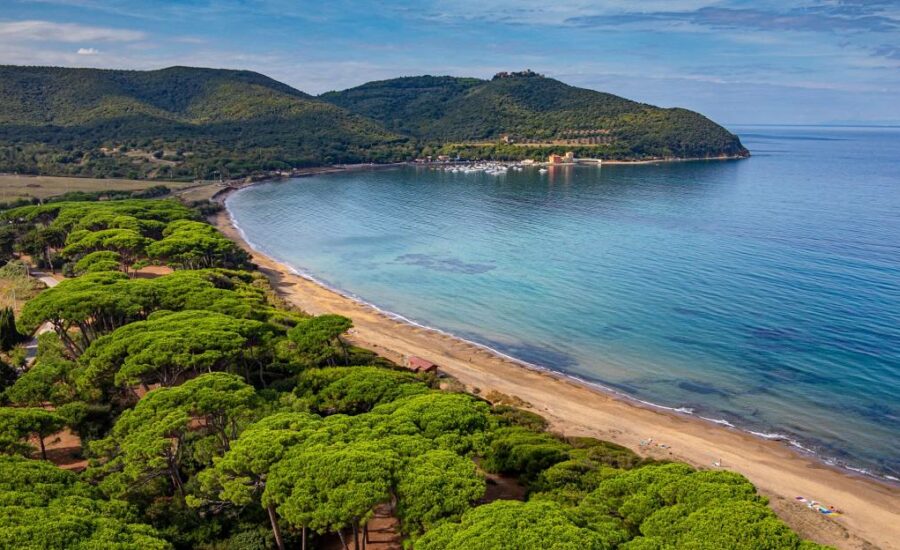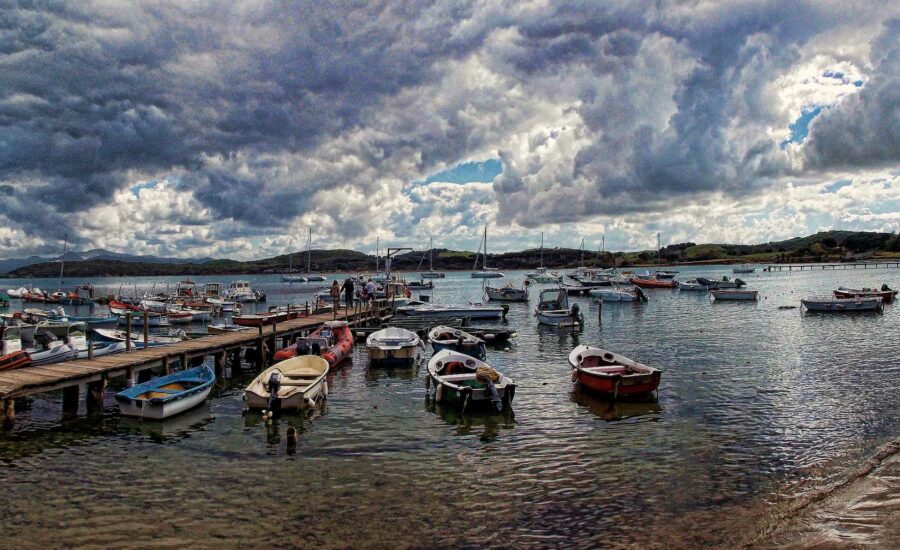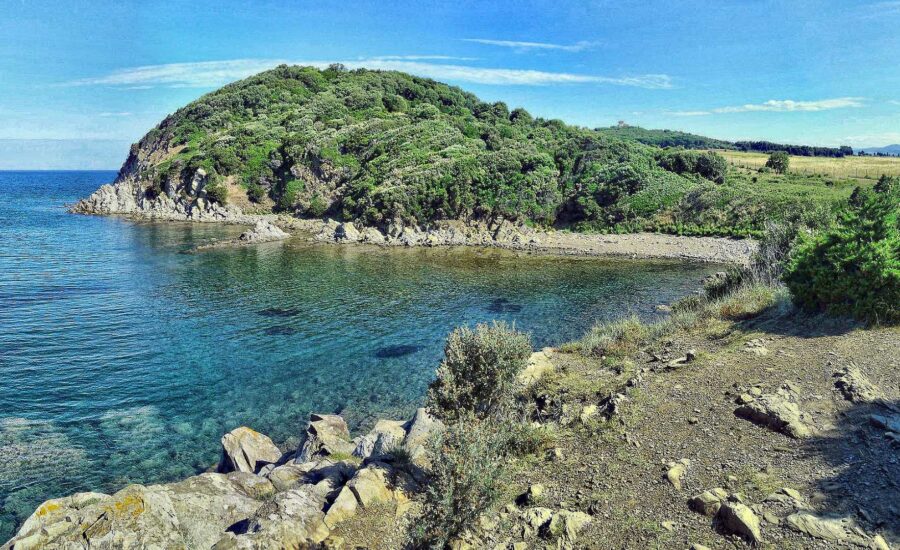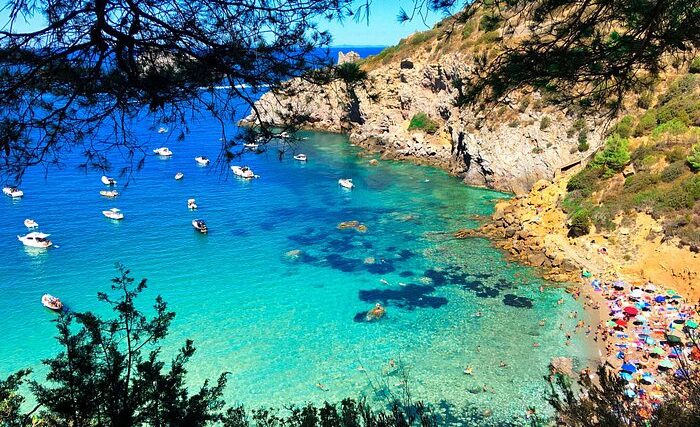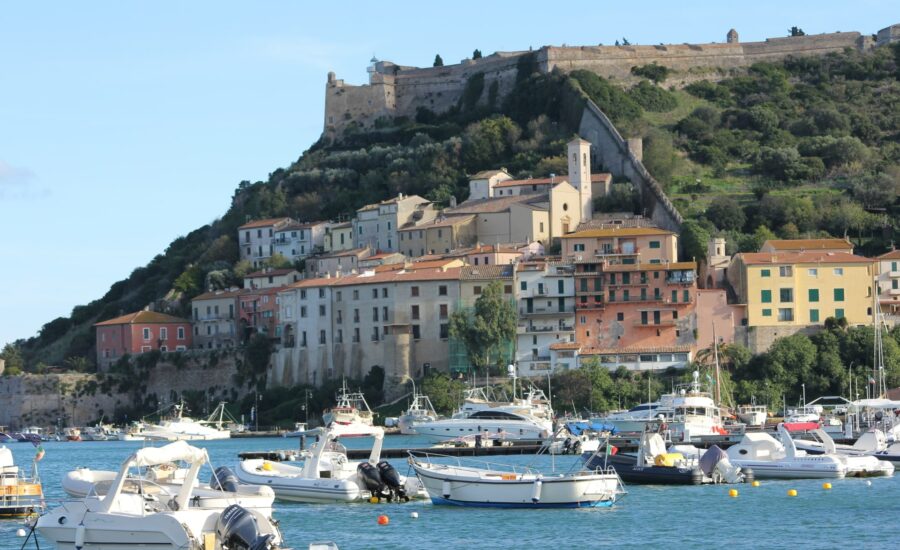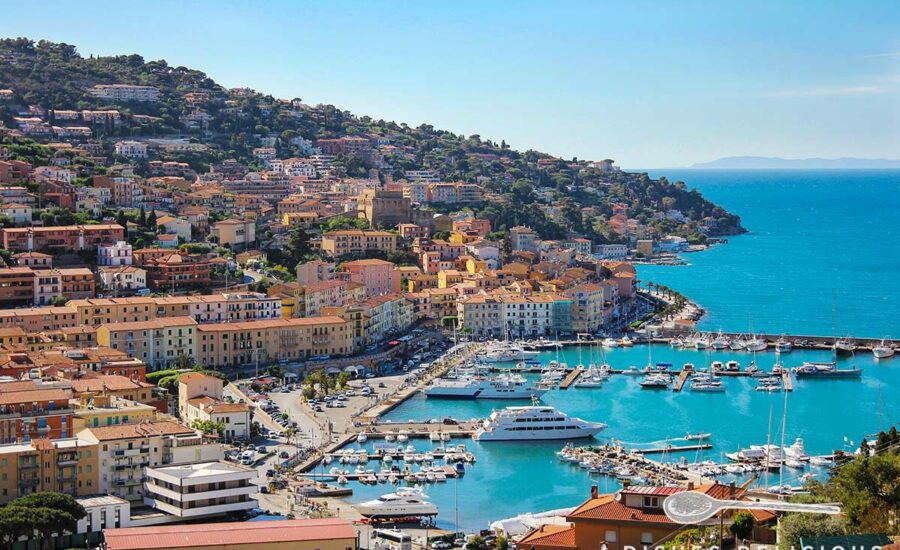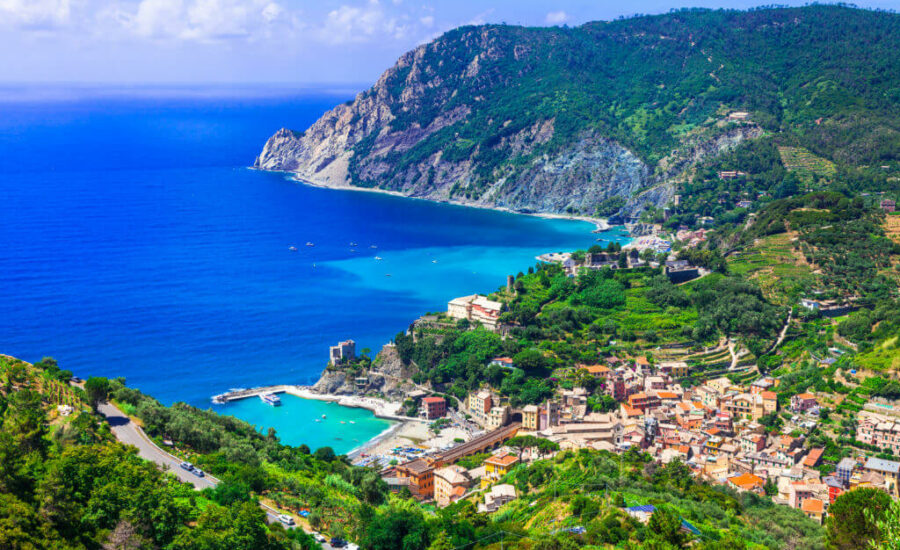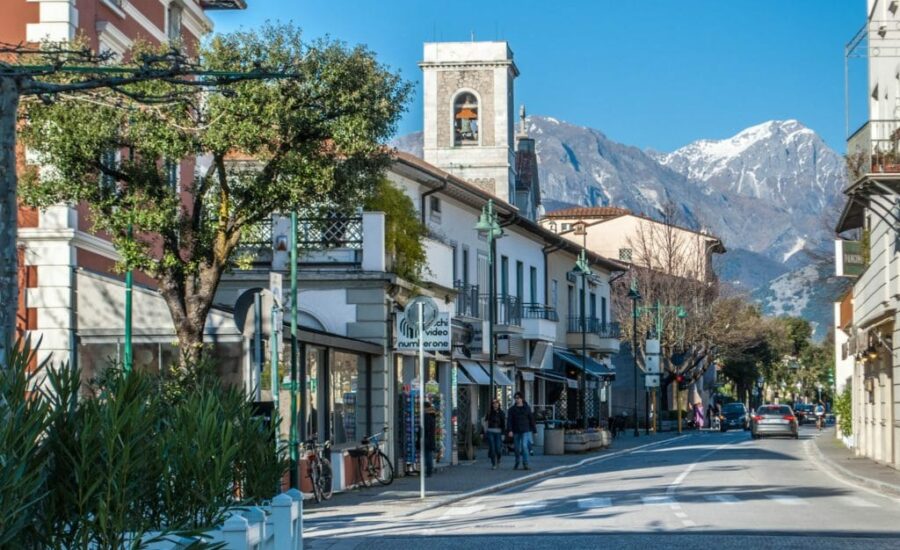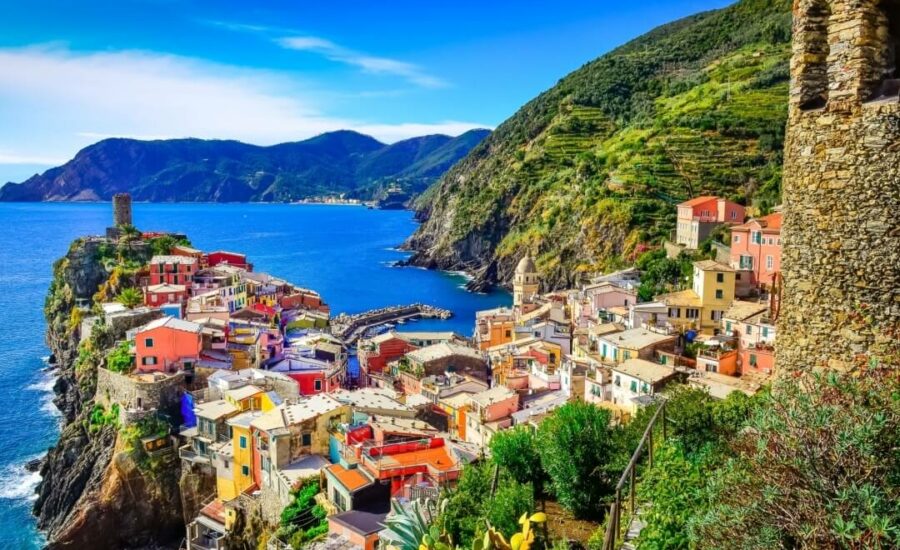
A Journey into Italian Culture
WHAT SEE
Podere Le Fonti is located in a strategic point of Tuscany, near the Siena-Florence connection, convenient for traveling to the major tourist destinations.
A few km away you can find:
Certaldo (10 km), San Gimignano (13 km), Castellina in Chianti (20 km), Monteriggioni (24 km), Siena (39 km), Volterra (37 km), Firenze (50 km), Montalcino (77 km), Pisa (87 km), Pienza (90 km), Montepulciano (98 km), Terme di Saturnia (157 km)
It is also possible to visit the beautiful Tuscan coast with its Tyrrhenian and Ligurian Sea:
Golfo di Baratti (110 km), Monte Argentario (154 km), Forte dei Marmi (148 km)

Certaldo
Certaldo is an Italian municipality of 15,479 inhabitants in the metropolitan city of Florence, famous for being the place of death and probably birth of the poet and writer Giovanni Boccaccio.
The historic village of Certaldo, known to everyone simply as Certaldo Alto, is small but truly worthy of a visit. After exploring it far and wide, don’t forget to set off to discover the wonderful surroundings. And while you’re there, don’t neglect Certaldo Basso, the most recent part of the urban area: there won’t be any monuments or medieval architecture, but you will find several shops, bars and restaurants. The two areas of the city are connected by a funicular, open every day. The Certaldo Basso station is located in Piazza Boccaccio, while the Certaldo Alto station is located at Porta Alberti. The funicular leaves every 15 minutes, from 7.30 am to 7.30 pm from mid-October to mid-April, and from 7.30 am to 1.00 am from mid-April to mid-October. The ticket costs 1 euro (1.20 euros for the return journey), and season tickets or carnets are also available. The funicular offers discounts for residents, children and disabled people.

San Gimignano
San Gimignano is a hill town in Tuscany located southwest of Florence. Surrounded by 13th-century walls, the hub of its historic center is Piazza della Cisterna, a triangular square lined with medieval houses.
The things to see in San Gimignano are all contained in the small historic center, declared a world heritage site by UNESCO. You can go from one to the other comfortably on foot, walking just a few minutes, passing alongside the many medieval towers that still stand proudly today. There’s no getting around it: San Gimignano is a true paradise for those on holiday in Tuscany. As if that wasn’t enough, the panorama that surrounds it is wonderful, made up of hills and vineyards as far as the eye can see. This is why, perhaps without too much surprise, it is crowded with tourists, who fill the streets 365 days a year.

Castellina in Chianti
Discovering the Etruscan city of Castellina in Chianti, one of the main cities of Chianti in the province of Siena.
300 Years of Chianti Classico It is in this restricted geographical area, which has approximately 70 thousand hectares of surface area, that one of the best known and most appreciated wines in the world is produced, Chianti Classico wine. A wine produced since Etruscan times and used as a valuable trading commodity as early as the 17th century. Since the 13th century, this area of Tuscany has been identified as a wine-growing area called Chianti and its borders were determined with an edict of the Grand Duke Cosimo III de’ Medici in 1716. The symbol of Chianti Classico is a Black Rooster, since 2013, on a white background framed by a burgundy colored circle. Legend has it that to put an end to their disputes during the 13th century, Florence and Siena decided to have a very particular race: the meeting point between two knights who left Florence and Siena respectively at cockcrow, would have marked the border of their respective territories. The Florentines chose a black cockerel and it is said that they kept him fasting and in the dark for a few days before the race, so that when he was freed he crowed long before dawn allowing the Florentine knight to reach further. The border was in fact set less than 20 km from the walls of Siena. Since then the Black Rooster was adopted first by the Chianti League and then by the Chianti Classico Wine Consortium as a symbol of this prized wine. What distinguishes Chianti Classico from other Chianti wines is the unmistakable pink label with the symbol of the Black Rooster on a gold background. This particular label represents the Chianti Classico Wine Consortium, founded in 1924 to protect this wine and its denomination.

Monteriggioni
Monteriggioni is an Italian municipality of 9,919 inhabitants in the province of Siena in Tuscany. It is part of the so-called Montagnola Senese.
In the heart of the Sienese countryside lies the splendid village of Monteriggioni, a truly enchanting and unique place in the world. Located on the top of a hill and surrounded by a circle of perfectly preserved circular walls, Monteriggioni is one of the places not to be missed during a tour of Tuscany. Visiting Monteriggioni you will find yourself immersed in a typically medieval atmosphere. The historic center of Monteriggioni is really very small: it has an approximately circular shape, with a diameter of only 170 metres. It goes without saying that getting around on foot is very simple, there are few streets, as are the buildings. But it is the atmosphere that makes Monteriggioni a true pearl of Tuscany.

Siena
The City of the Palio, whose seventeen historic districts (city districts) extend all around starting from Piazza del Campo.
Siena, a city in Tuscany, in Central Italy, stands out for its medieval brick buildings. Piazza del Campo, the central square with its characteristic fan shape, is home to the Palazzo Pubblico (the Gothic style town hall) and the Torre del Mangia, a slender 14th century tower from whose white battlements you can enjoy a stupendous view. The seventeen historic contradas (city districts) extend all around starting from the square.

Volterra
Volterra is a walled town in the province of Pisa.
Volterra is a town south-west of Florence. The Palazzo dei Priori, in the center, has medieval frescoes and a bell tower from which endless views open up. The Duomo boasts a marble entrance portal and a gilded coffered ceiling. Not far away are the remains of the Etruscan Acropolis. The Guarnacci Etruscan Museum houses a rich collection of archaeological artefacts. The Roman Theater complex includes the ruins of 3rd century baths.

Firenze
Florence, the capital of Tuscany, is home to many masterpieces of Renaissance art and architecture.
Florence needs no introduction. The capital of Tuscany is one of the most important art cities in our country and beyond, a true historical and artistic point of reference on a global level. Some of the most famous art museums in Italy are concentrated in Florence, among which the Uffizi Gallery stands out, which records over 4 million admissions every year, alongside illustrious names such as the Accademia Gallery, the Bargello museum, the Medici Chapels and much more. But not just art and culture: Florence is also synonymous with gastronomic excellence, good food and excellent wine. Lose yourself in the streets of the historic center, leaving for a moment the ones most frequented by tourists, and you will discover a hidden Florence made up of small taverns, cheap restaurants and wineries, where you can taste excellent local wine in typical Florentine rustic settings, full of laughter, conviviality and music popular. But even if you want to stay within the tourist routes, you will definitely have a lot to see in Florence. From the splendid Piazza del Duomo, where the cathedral of Santa Maria del Fiore is located, with Brunelleschi’s iconic dome and Giotto’s bell tower, passing through Piazza Signoria, where Palazzo Vecchio, seat of the municipality of Florence, is located, up to in the magnificent Piazza Santa Croce, you will constantly have the impression of finding yourself in an open-air museum, made up of works of art and magnificent monuments
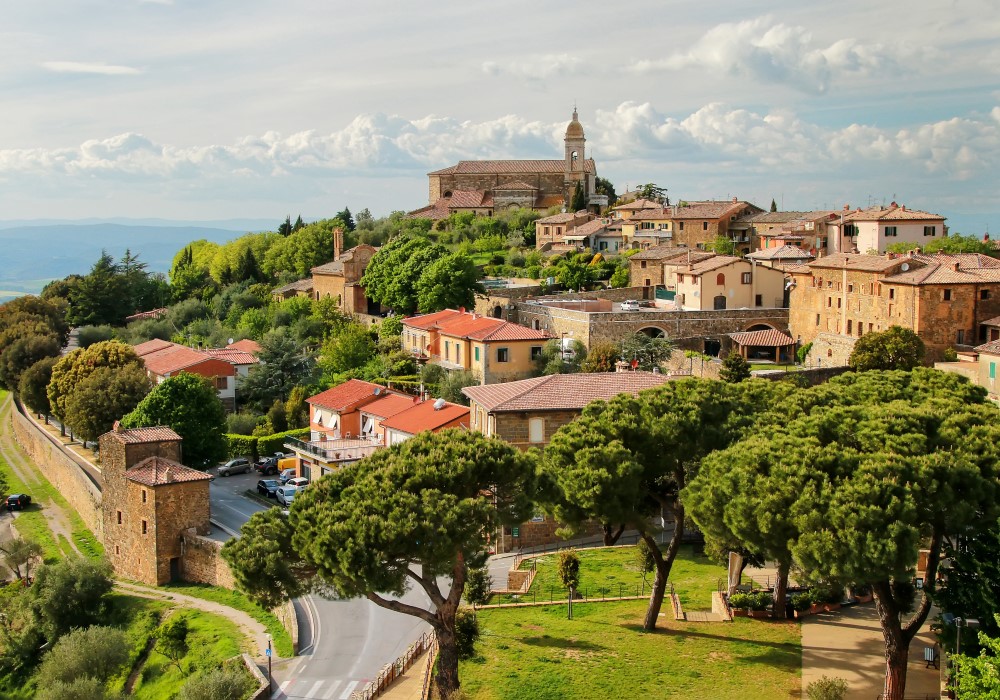
Montalcino
Montalcino, a place famous for the production of Brunello di Montalcino and Rosso di Montalcino wines.
A small town in the province of Siena known everywhere for the wine produced there, Brunello, Montalcino is a truly unmissable destination during a tour of Tuscany. We are on the western edge of the Val d’Orcia, near Mount Amiata and not far from the border with the province of Grosseto. Here, on the top of a hill, is the ancient medieval village of Montalcino, with its wonderful monuments that overlook the rolling Tuscan hills. In the heart of the historic village of Montalcino, in the splendid setting of the central Piazza del Popolo, the Palazzo dei Priori, dating back to the end of the 13th century, stands out. On its facades you can still admire the coats of arms of the mayors who governed Montalcino over the centuries, while just behind it stands the medieval tower, with battlements and a built-in clock. In the hamlet of Castelnuovo dell’Abate, about 10 kilometers by car from the center of Montalcino, there is the beautiful abbey of Sant’Antimo. It is a former Benedictine convent built in Tuscan Romanesque style, dating back to the 12th century, used until 1500 and then abandoned by the monks until a few years ago.
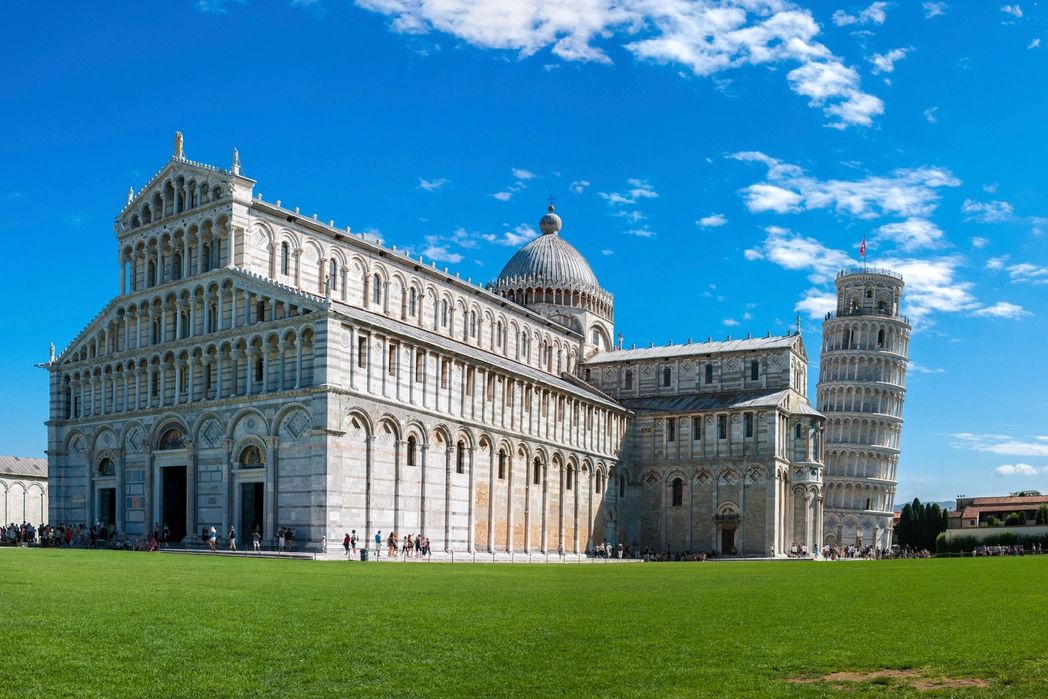
Pisa
Pisa, the famous city of the leaning tower.
Pisa is an Italian city in Tuscany known above all for the famous leaning tower. Already off-axis upon its completion in 1372, the 56 m high white marble cylinder is none other than the bell tower of the marble Romanesque cathedral that stands nearby, in Piazza dei Miracoli. The same square hosts the monumental Camposanto and the Baptistery, where every day non-professional singers put themselves to the test with its famous acoustics.
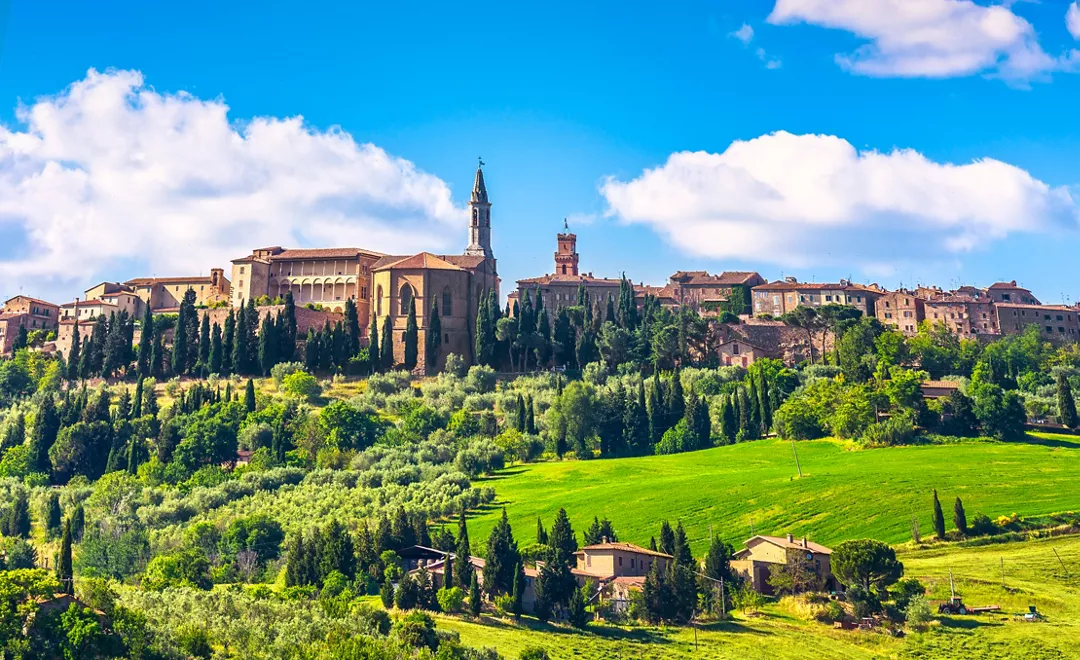
Pienza
Located in Val d’Orcia. The historic center was declared a world heritage site by UNESCO in 1996.
The Cathedral of Pienza, also called the Cathedral of the Assumption, houses important and notable paintings by the most renowned artists of the time. With an octagonal shape, the beautiful bell tower rises above the ancient crypt. The Pieve di Corsignano is a beautiful and romantic little church just a few minutes walk from the center of Pienza. Pienza owes its fame to the famous pecorino, a very tasty, more or less mature cheese, made with sheep’s milk which has many admirers scattered everywhere. It is one of the oldest cheeses in the world, still prepared as it was thousands of years ago. Visiting the Tuscan village, full of small and charming shops selling many varieties of pecorino ready to be tasted together with the many other typical local products, means taking a journey with all 5 senses.
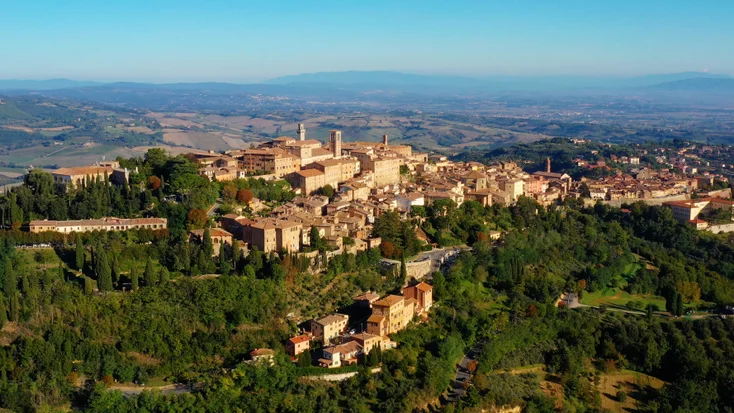
Montepulciano
Montepulciano is a medieval hill town in Tuscany, Italy. Surrounded by vineyards, it is known for its Nobile red wine.
Perched on the top of a hill, south of Tuscany and not far from Siena, Montepulciano is a medieval town of rare beauty that certainly deserves a visit. A unique village with elegant Renaissance buildings, ancient churches, splendid squares and small hidden corners. Furthermore, from Montepulciano you can enjoy a fabulous and boundless panorama over the Val d’Orcia and the Val di Chiana. Piazza Grande is the heart of Montepulciano and the stage for the city’s main events, including Il Bravio delle Botti, held every year in August, and much more. A walk through the streets of Montepulciano is the best way to discover the city and its attractions and at the same time to admire the incredible view of the surrounding countryside all covered with those fabulous vineyards that produce the famous Nobile.
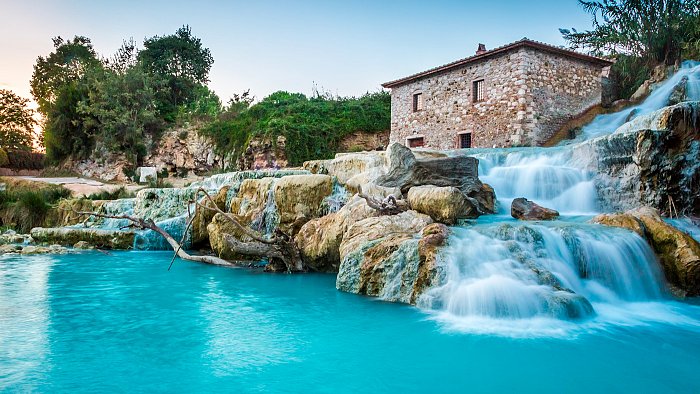
Terme di Saturnia
The Thermal Park is an oasis of 20,000 m2 dedicated to well-being, accessible to adults and children for whom two of the four thermal pools are reserved.
The Saturnia Spa consists of a single thermal spring which flows at a constant temperature of 37.5 degrees and is located within a spa structure which includes: Thermal Park, Terme di Saturnia SPA & Golf Resort and Golf Club. The spring, in addition to supplying the thermal park, also feeds, with a lower water temperature, the Cascate del Mulino and those following the thermal park. The complex is located in Località Follonata, in the municipality of Manciano, a few kilometers from Saturnia.

Golfo di Baratti
A perfect combination of a crystal clear sea, a history of important civilizations and the typical nature of the Maremma.
Golfo di Baratti is a renowned tourist resort, which finds life within the perimeter of the municipality of Piombino. Overlooking the coast of Tuscany to the south of the province of Livorno, washed by the waters of the Ligurian Sea there is this gulf full of attractions. Uncontaminated nature, archaeological evidence of the Etruscan civilisation, itineraries and excursions, the sea, the village of Populonia and many activities to do to fully experience this gulf.
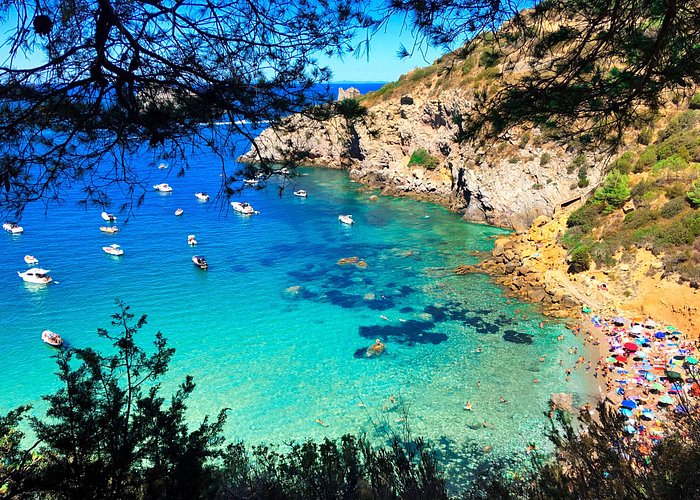
Monte Argentario
Monte Argentario is an Italian municipality of 11,885 inhabitants in the province of Grosseto in Tuscany.
The municipal seat and capital is Porto Santo Stefano, located on the north-western coast while on the south-eastern coast is the fraction of Porto Ercole. Located in the Maremma Grossetana and part of the Silver Coast at the southern end of Tuscany, it has a great seafaring tradition. The municipality, known for its tourist vocation, is a center of international importance for sailing and pleasure boating.
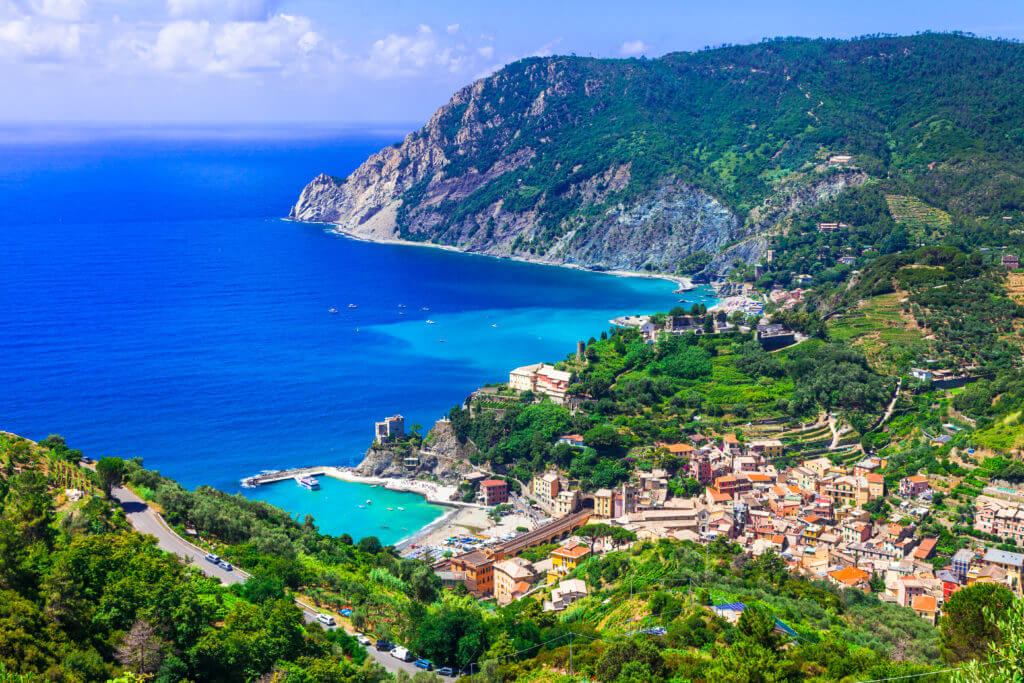
Forte dei Marmi
Seaside holiday resort overlooking the Ligurian Sea.
It takes its name from the fort that stands in the center of the city, built by the Grand Duke Leopold to defend the landing place, and from the marbles that were transported from the Apuan Alps, not far away, to the pier and then took the sea route. The town is characterized by a strong presence of greenery, especially pine forests and some surviving scrub of holm oak, an ancient plant typical of this area. In fact, although there are not many public parks, the city is embellished with tree-lined avenues and villas with large gardens. The beach of Forte dei Marmi is entirely made up of very fine golden sand. The sea, in certain periods of the year, is relatively clear and transparent even far out to sea.
